
Reading & Resources
School Administrator, January 2016
Book Reviews
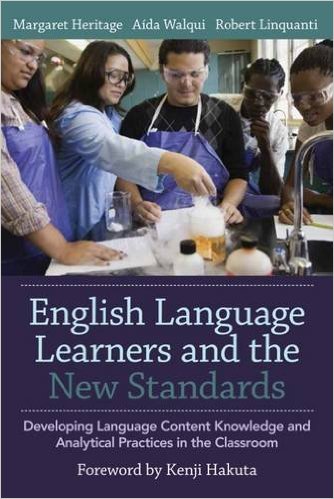 English Language Learners and the New Standards: Developing Language, Content Knowledge, and Analytical Practices in the Classroom
by Margaret Heritage, Aída Walqui and Robert Linquanti,
English Language Learners and the New Standards: Developing Language, Content Knowledge, and Analytical Practices in the Classroom
by Margaret Heritage, Aída Walqui and Robert Linquanti, Harvard Education Press, Cambridge, Mass., 2015, 224 pp. with index, $32 softcover
English Language Learners and the New Standards challenges us to make major pedagogical reformulations in order to use existing research to better serve English Language Learners. Margaret Heritage is best known for her work in the area of formative assessment. Add Aída Walqui’s expertise on the blending of language and content learning and Robert Linquanti’s policy focus on assessment and accountability for English language learners and you have a book that is rich in theory but grounded in practice.
The book explains that with the new standards, we have the same high expectations for our ELLs as we do for our general education students. However, we know that ELLs will have additional instructional needs and there is not just one type of English language learner. ELLs must be provided with the scaffolding to engage in worthwhile material and tasks, not fragmented or watered down experiences that resemble general education experiences but do not allow for making meaning.
Authentic classroom examples of quality differentiated instruction provide a model of how student discussions present teachers with rich formative assessment opportunities. Formative assessment assists the teacher in providing what each student needs to make meaning from the content while they enhance their language development.
I would recommend this book for principals, ELL teachers and general education teachers who have ELLs in their classrooms. The classroom vignettes that follow the theory show how English language acquisition and content learning can be woven together to help all students be successful through quality instruction and formative assessment.
Reviewed by Nancy L. Wagner, superintendent, Beach Park, Ill.
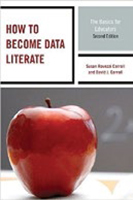
How to Become Data Literate: The Basics for Educators (2nd edition)
by Susan Rovezzi Carroll and David J. Carroll, Rowman & Littlefield, Lanham, Md., 2015, 132 pp., $28 softcover
School leaders generally have to deal with a large amount of data to make informed decisions, but often do not have the statistics skills necessary to interpret that data. In How to Become Data Literate Susan Rovezzi Carroll and David J. Carroll of Words & Numbers Research, Inc., provide succinct yet comprehensive support for administrators wading through applied basic quantitative statistics as a tool for data analysis. The book provides support to educators who have responsibility for analysis of educational data. It is also a wonderful compliment as a primer, refresher or reference for educators that might have had courses or training in quantitative statistics.
I was surprised at the amount of content that was competently covered in such a short book. In just 150 pages, the authors offer the reader the instruction and support necessary to manage, manipulate, visualize and interpret the findings of their data analysis projects. While not an exhaustive text covering all options available to the quantitative statistician, the book provides support for administrators seeking to understand and utilize common statistical techniques.
The text takes the reader through the process of identifying, utilizing and understanding data. It attends to issues related to descriptive statistics, presentation of data, sample selections, establishing realistic research questions and reporting findings to meet programmatic needs. The text also provides support for educators wanting to utilize the quantitative statistical methods of correlations, t-tests, chi-squares, and ANOVA analysis.
For those wanting more sophisticated levels of quantitative statistical analysis, you will need to look elsewhere. However, the support that this text provides should assist the educational leader in meeting most of the data interpretation needs that they encounter in their work.
I plan on utilizing this text in the courses that I teach and will strongly recommend it to my doctoral students. However, the utility of this work extends outside traditional higher education settings. The text should also be considered by educational leaders looking for either an introduction to quantitative statistics or a refresher that supports previous statistics courses.
If your work responsibilities include making sense of data and analyzing results from a practical, programmatic perspective, or if you need a support for quantitative statistics courses that you might be taking, I suggest that you consider this work.
Reviewed by Mark E. Deschaine, assistant professor of educational leadership, Central Michigan University, Mount Pleasant, Mich.
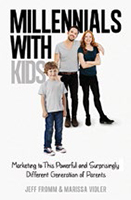 Millennials with Kids: Marketing to This Powerful and Surprisingly Different Generation of Parents
by Jeff Fromm
Millennials with Kids: Marketing to This Powerful and Surprisingly Different Generation of Parents
by Jeff Fromm and
Marissa Vidler, AMACON, New York, N.Y., 2015, 240 pp. with index, $24.95 hardcover
Marketing research consultants Jeff Fromm and Marissa Vidler have teamed up in
Millennials with Kids to focus on effective marketing strategies for the newest generation of parents: millennials.
The book is organized into six chapters, each of which explores a different marketing strategy. For example, imagine you are the owner of a children’s consignment clothing store. In years past, it might have been considered effective marketing to send an advertisement through the mail to thousands of people. However, when targeting today’s parents, social media is a more effective (and cheaper) approach. It provides parents with a sense of ownership as they connect with thousands of other parents through comments and feedback promoting your store.
The topics in the book range from defining millennials by age and behavior to assessing the role of millennial dads in this new generation of parenting. At the end of each chapter, the authors provide key takeaways to help summarize its main points.
The book is focused on how businesses should market to this new generation of parents, but the concepts can be applied to education as well. For example, the authors suggest that “millennials don’t want to be told what do; they want to be asked how to do it.” How does this relate to how schools involve parents in their child’s educational experience and form effective school-home partnerships?
As a superintendent, I have already found the information in this book helpful as we continue to evaluate the most effective strategies for communicating with parents and promoting the many daily achievements of our students and staff.
Reviewed by Justin B. Henry, superintendent, Goddard, Kan.
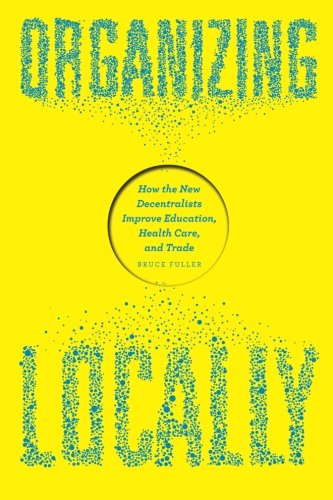 Organizing Locally: How the New Decentralists Improve Education, Health Care and Trade
by Bruce Fuller
Organizing Locally: How the New Decentralists Improve Education, Health Care and Trade
by Bruce Fuller, University of Chicago Press, Chicago, Ill., 2015, 312 pp., $25 softcover
Bruce Fuller, professor of education and public policy at the University of California, Berkeley, takes an in-depth look at organizational structure and change during the past several decades in
Organizing Locally.
He focuses on the movement of health care, education and business organizations from a bureaucratic hierarchal structure to a decentralized commitment to localism. He makes compelling arguments and offers examples of localism that work in each of these sectors.
The essential question he asks is why, after two centuries of modern hierarchy and routinized forms of work, have centralized organizations lost social authority and economic clout? He points out the numbers of large hierarchies broken apart in recent years; schools, health care institutions, banks, telecom and high tech companies that have ceded discretion over resources and tools to local practitioners. He provides answers to this question throughout the book by exploring each sector and how and why it is adapting to meet the needs of employees, consumers and the global economy.
As an educator, I can certainly see the changes that have occurred over the past decades in how schools are organized including the advent of charter and for-profit schools and the upcoming changes to No Child Left Behind where increasingly more responsibility is being moved back to the state and local levels. This move toward localism can be seen in every city where citizens are being asked to buy locally, support local charities and to think globally but act locally. This makes sense as schools can adapt more quickly to changes in demographics, funding and governmental mandates at the local level than at the state or national level.
While this book devotes equal attention to business and health care as to the changing landscape in education, it is a thought-provoking, data-driven treatise on changes occurring in our world. Forward-thinking educators will benefit from reading this well-written book.
Reviewed by Jim Hattabaugh, assistant professor of education, Georgia Southern University, Statesboro, Ga.
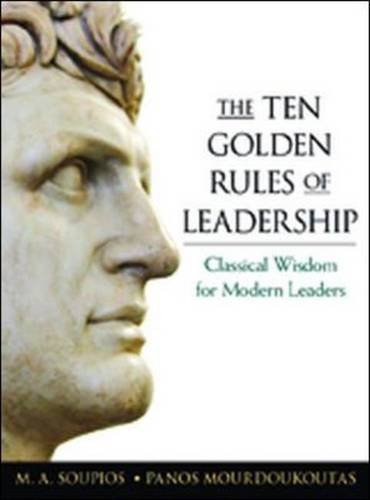 The Ten Golden Rules of Leadership: Classical Wisdom for Modern Leaders
by M.A. Soupios
The Ten Golden Rules of Leadership: Classical Wisdom for Modern Leaders
by M.A. Soupios and
Panos Mourdoukoutas, AMACOM, New York, N.Y., 2015, 144 pp., $15.95 hardcover
What makes a successful leader? This age-old question has been studied since antiquity and, according to the authors of
The Ten Golden Rules of Leadership, the writings of the early philosophers are as relevant today as they were when they were first written.
Co-authors M.A. Soupios, professor of political philosophy, and Panos Mourdoukoutas, professor of economics, both of Long Island University in Brookville, N.Y., believe that successful leadership combines skill, expertise and personal awareness and that every organization needs a quality leader to move forward and reach its goal.
The book is divided into 10 chapters or “rules of leadership” that trace the qualities of successful leaders using a series of ancient insights from Aristotle, Plato, Hesiod, Heraclitus and others. The classical writings are used to illustrate the difference between genuine leadership and plain administration.
Many of the chapters emphasize personal characteristics that are key ingredients for quality leadership. Rule 1, know thyself, examines the hidden motives of one’s actions. Aristotle reminds us in rule 7 to live life by a higher code and to let go of grudges and ill will. The readers are also reminded to never underestimate the power of personal integrity (rule 9) and that character is destiny (rule 10).
The authors believe that leaders have always been challenged and that self-examination is critical if one wants to grow as a leader. The writings were selected to foster the reader’s self-examination and to encourage the bold and unconventional attitudes of a unique leader.
The Ten Golden Rules of Leadership is an interesting way to reflect on one’s personal practices (manager turned philosopher) and refresh one’s soul.
Reviewed by Edythe B. Austermuhl, superintendent, Berlin Township School District, West Berlin, N.J.
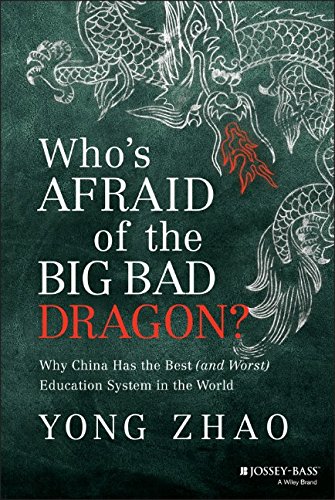 Who’s Afraid of the Big Bad Dragon? Why China Has the Best (and Worst) Education System in the World
Who’s Afraid of the Big Bad Dragon? Why China Has the Best (and Worst) Education System in the World
by Yong Zhao, Jossey-Bass, San Francisco, Calif., 2014, 272 pp., $26.95 hardcover
In the current climate of distrust toward national educational policies, testing and accountability,
Who’s Afraid of the Big Bad Dragon? comes out against China’s educational system and authoritarian approaches to reform. Anyone opposed to international educational comparisons will appreciate this book’s message.
According to author Yong Zhao, a significant factor of Chinese success on tests is the nation’s centuries-long test-taking history. Outside of royal family lineage, the acknowledged path to success for the Chinese population was to perform well on government-administered tests. While tests can be viewed as logical and unbiased arbiters of who gets ahead in society, the author maintains that these tests have produced a compliant and non-creative mindset among the Chinese.
Zhao describes China’s history and delivers lessons about the evils of authoritarian control and the virtues of individual enterprise. While serious Chinese scholars may consider these stories overly simplistic, they can help the American reader make sense of the Chinese education system.
Author Yong Zhao was born and raised in China. He taught English there before coming to the U.S. as a visiting scholar in 1992. He is currently director of the Institute for Global Education and professor in the department of educational measurement, policy and leadership at the University of Oregon. He is one of the thousands of Chinese who have studied abroad as part of China’s policies designed to advance its standing in the world.
Programme for International Student Assessment, or PISA, results have ranked Chinese students at or near the top for years. While hard work is often cited as the reason for this success, some Chinese complain about the drudgery, the narrow focus of the curriculum and the lack of creativity of this test-dominated educational design. In fact, the government has issued orders against some of the most offending practices – excess homework, extra classes, more testing, etc. Yet, Zhao said, “the offending witch refuses to be killed” because local educators and parents are convinced students will do better with hard work.
While China’s PISA director calls the testing system, or gaokao, “a great equalizer,” the author writes: “…the gaokao, like any other exam of that nature, is inherently discriminatory, favoring those who have the resources to prepare, the propensity to do well, and the interest in what is being tested, and working against those who are unwilling or unable to comply.”
Zhao’s opinion is epitomized in the following passage from his book: “China’s education represents the best of the past. It worked extremely well for China’s imperial rulers for over a thousand years, but it stopped working when the modern world emerged. It continued to produce students who excel in a narrow range of subjects. But these students lack the very qualities the new society needs….In no way can China serve as the model for the future. In fact, we don’t yet have a model that will meet the needs of a global future. We will have to invent one.”
Reviewed by Art Stellar, vice president, National Education Foundation, McLean, Va.
 Why I Wrote This Book...
Why I Wrote This Book...
“It was my first superintendendency in 1960. At the time, the -California legislature and governor wanted to close small school districts. Sunol wanted to retain its local control. Although they had only six percent of the voters, they were able to go to the larger communities and have them vote for Sunol. Later, the state passed legislation to save small districts. How was this done? My book provides hope for the underdog. Size is not the factor. It is commitment, dedication and the will and desire to succeed that really counts.”
Peter Corona, AASA emeritus member, on writing
Sunol: Never Too Small to Succeed (Xlibris 2015)
ABSTRACT
Women’s Longevity
A recent doctoral study at Walden University examined the relationship between the longevity of women superintendents and perceived barriers that may influence longevity.
Researcher Kim C. Sethna surveyed and interviewed five women superintendents with longevity of at least six years.
She discovered a shift in the perception of barriers over the last two decades, with important issues surrounding relationships and possible self-imposed barriers. The women superintendents no longer worried about breaking the glass ceiling or competing with their male counterparts. Rather, they were concerned with balancing professional and personal responsibilities while maintaining positive relationships at school and at home.
Copies of “Longevity of Women Superintendents” are available from ProQuest at 800-521-0600 or disspub@proquest.com.
BITS & PIECES
Research Briefs
Best Evidence in Brief, an e-newsletter produced by the Center for Research and Reform in Education at Johns Hopkins School of Education, offers a biweekly round-up of current education research news.
The e-newsletter looks at the evidence behind the headlines, providing practical information on what works in schools.
Sign up at http://www.bestevidence.org/subscribe.cfm.
Security Resources
The Readiness and Emergency Management for Schools Technical Assistance Center offers on-site trainings by request for schools, districts and institutes of higher education.
Training topics include “Developing Emergency Operations Plans K-12,” “Threat Assessments in Schools” and “Resilience Strategies for Educators.”
Request details at http://bit.ly/developing-emergency-plans.
Engagement Event
Bright Futures USA, a non-profit organization dedicated to bringing communities together to focus on the success of children, is hosting its Community Engagement Conference at Missouri Southern State University in Joplin, Mo., March 2-4.
Ruby Payne, author of A Framework for Understanding Poverty, will keynote the event.
Register at http://bit.ly/bright-futures-engagement-conference.
Teacher Bonuses
Mathematica Policy Research has released an evaluation of the Teacher Incentive Fund’s pay-for-performance bonuses.
After two years of use, researchers found small positive effects on student reading achievement. More than 60 percent of teachers in participating districts received a bonus.
Access the report at http://bit.ly/teacher-pay-for-performance.
Conference Publication
AASA members can follow the developments of the association’s national conference in mid-February in Phoenix, Ariz., through Conference Daily Online, a multimedia publication updated daily.
The site includes news stories about major speakers and award winners, a photo gallery, video clips, a conference blog involving several participating superintendents and a Twitter feed. The site also includes conference presenters’ PowerPoint slides from an array of sessions.
Women’s Conference
AASA is co-hosting a Women’s Leadership Conference on March 9 with the New Jersey Association of School Administrators and the Foundation for Educational Administration. It will be held at FEA headquarters in Monroe, N.J.
Presentations will address pathways to leadership; the roles women play; work/life balance; females in science and math; crisis management; negotiation skills; and coaching and mentoring.
Find more at www.aasa.org.
My AASA.org
AASA’s newly launched my.aasa.org provides exclusive web content, policy resources, special offers, engagement and communication tools, legal resources and more to association members only. Members must log in to join communities and to read and share member blogs.
Visit my.aasa.org to find out more.